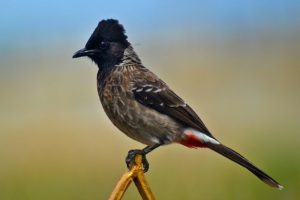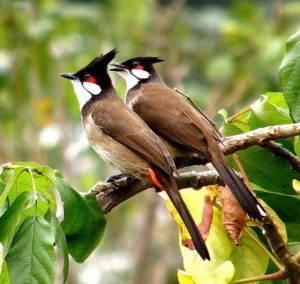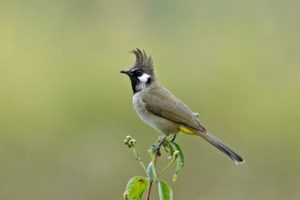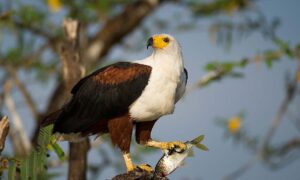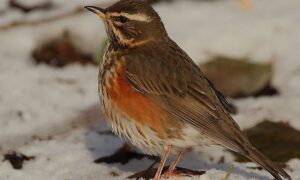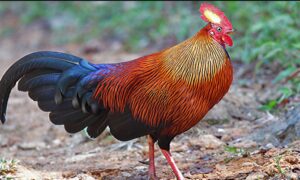The National Bird of Bahrain is Bulbul. Throughout most of Bahrain’s history, the country has always been a center of conflict or commerce. Other empires and nations have wanted to control Bahrain for its strategic position and its resources. It is believed that what is known as Bahrain was first inhabited more than 5200 years ago. After 3000 BC, an empire of commerce called the Dilmun civilization was established on the island. From 2100 to 1700 BC, Dilmun was a large city and was also considered a sacred place. From 1700 BC to 700 AD, a number of powerful foreigners exercised control over Bahrain. In each case, when the conquering civilization reached Bahrain, they suffered economic problems at first, but gradually regained their place as the main center of commerce. Around the year 1700 BC, The Assyrians imposed control over the Gulf Region . This powerful empire had grown from northern Mesopotamia and had gradually controlled a huge area from the Mediterranean Sea to the Caspian Sea , and from the Red Sea to the Arabian Gulf.
General Seleucus took control over the region that includes Bahrain. During the reign of Seleucus and his descendants, Bahrain, Syria , Mesopotamia and Persia enjoyed a prosperous time. But in the year 250 BC, another powerful empire of Persia called Parthians , cast the Greeks out of the Gulf region. In the third century AD, Persian control in the Gulf region reached the highest point under the reign of the Sassanids , A Persian dynasty. The Sassanids reigned the area for about 4 centuries. Mesopotamia and Persia enjoyed a prosperous time. But in the year 250 BC, another powerful empire of Persia called Parthians , cast the Greeks out of the Gulf region. In the third century AD, Persian control in the Gulf region reached the highest point under the reign of the Sassanid’s , A Persian dynasty. The Sassanids reigned the area for about 4 centuries. Mesopotamia and Persia enjoyed a prosperous time. But in the year 250 BC, another powerful empire of Persia called Parthians , cast the Greeks out of the Gulf region. In the third century AD, Persian control in the Gulf region reached the highest point under the reign of the Sassanids , A Persian dynasty. The Sassanids reigned the area for about 4 centuries. Persian control in the Gulf region reached its highest point under the reign of the Sassanids , a Persian dynasty. The Sassanids reigned the area for about 4 centuries. Persian control in the Gulf region reached its highest point under the reign of the Sassanids , a Persian dynasty. The Sassanids reigned the area for about 4 centuries.
National Bird of Bahrain
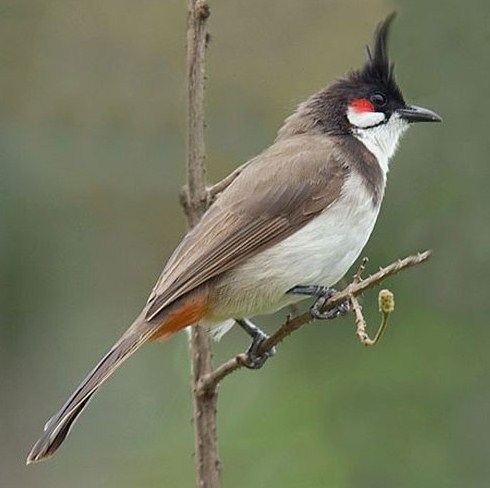
National Bird of Bahrain
When a pair of Orpheus bulbules escaped from an aviary in the Miami area in 1960, they found an environment that suited their needs perfectly. The climate was not too different from that of eastern India, where they originated, and the suburb of Kendall (Florida) had abundant tree plantations and exotic shrubs that provided a large amount of berries throughout the year. The birds settled quickly, but they did not stray too far from Kendall. Another population of this species is common in Honolulu, Hawaii.
Do you know common Raven is national bird of Bhutan ?
[table caption=”Bulbul Features” width=”500″]
No.,Features,Measures,
1,National Bird,Bahrain
2,Family,Pycnonotidae
3,Wingspan,13 To 29 cm
4,Phylum,Chordate
5,Mass Male, 0.98 oz.
6,Mass Female, 0.98 oz.
7,Body Length,18 cm
[/table]
Interesting Facts about Bulbul
Food
It moves in flocks to feed on fruit plants, except when it is in the nesting season. It leaves flying to catch insects in the air, flies over a place to pick them from the bark and searches them through the foliage.
Eggs
Usually, 3. Pinkish with abundant purple or reddish spots. Incubation is performed by both parents, and lasts between 12 and 14 days.
Breeding
Both parents feed the offspring. The age of the first flight of the offspring is not known.
Diet
Berries, small fruits and insects. With its small beak, it eats large fruits only when they are too ripe or when they are pierced by other birds. Important foods consumed in Florida include berries and fruits of Brazilian pepper, figs, lantana and jasmine, among others. Liba nectar and eat pieces of flowers and shoots of vegetation. He also eats many insects.
Nesting
In Florida, the breeding season runs from February to June. Florida birds do not seem to defend the territories in a forceful way: they often tolerate the presence of other bulbules near the nest. In the courting exhibit, one bird may approach the other flapping and bending, and both birds raise and lower the crest repeatedly. Nest: The nest is usually found low in shrubs, vines or small trees, at a distance of 60 cm to 2.5 m from the ground and, in general, nests are well hidden. The nest, located in the fork of a branch, is a cup made with grass, herbs, rootlets and casuarina beads. The outside of the nest is decorated with pieces of paper or plastic, bark shells or other debris.
National Bird Picture
